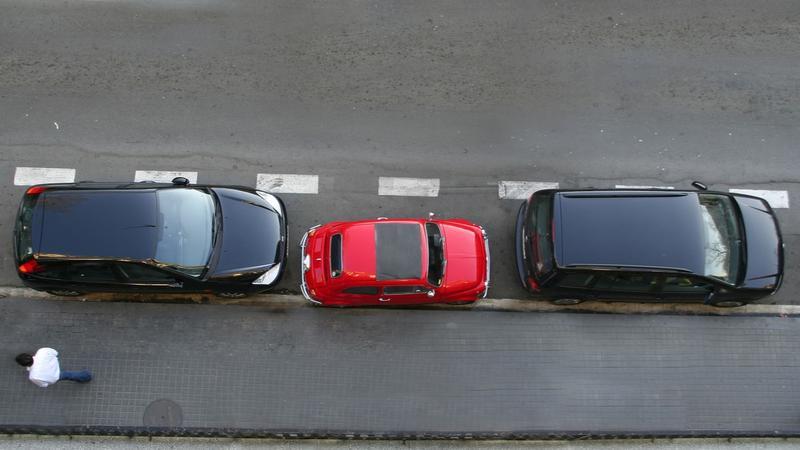There are a lot of upsides to driving a small vehicle. Typically, they’re fuel-efficient, and therefore, more environmentally friendly, easy to manoeuvre into tight parking spaces, and more affordable to buy than larger vehicles. They’re also fun to drive, and depending on the model, they may have cheaper car insurance rates.
But there are downsides too: less passenger and cargo space, they may not be as smooth a ride as bigger cars, have less horsepower, and concerningly, they’re potentially more dangerous to be sitting in if involved in a car accident.
Are SUVs and pickup trucks safer for drivers and their passengers than cars? It depends. Comparing data from 1975 to 2018, the Insurance Institute for Highway Safety found car occupant deaths have decreased by 49%, while pickup occupant deaths increased by 19%, and SUV occupant deaths are up by more than 10 times over the same period.
But do motorists who drive small cars face a higher chance of getting into a car accident than those who drive larger vehicles?
Find the Best Car Insurance Rates
Compare car insurance quotes from 50+ providers in a single search. Start saving money today on the premiums you pay.
Does Size Matter? Comparing Accident Rates by Vehicle Size in Alberta and Ontario
We defined a small vehicle as a compact, subcompact, or mini-compact car, and a large vehicle as a full-size car or SUV.
By accessing data from InsuranceHotline.com’s auto insurance quoting tool from January 2017 to December 2019, we looked at the percentage of accidents between small and large vehicles in both Alberta and Ontario. Here’s what we found:
| Province | Percentage of Accidents for Small Vehicles | Percentage of Accidents for Large Vehicles |
|---|
| Alberta | 14.6% | 15.1% |
| Ontario | 11.1% | 12.1% |
Overall, our data suggests large vehicles are more likely to be involved in a collision than small cars.
We also took a look at the percentage of accident rates for both small and large vehicles from automakers where we had more than 1,000 quotes:
| Automaker | Percentage of Accidents for Small Vehicles | Percentage of Accidents for Large Vehicles |
|---|
| Acura | 13.9% | 13.3% |
| Chevrolet | 12.3% | 14% |
| Dodge | 14.5% | 13.3% |
| Ford | 13.9% | 13.6% |
| Honda | 10.3% | 11% |
| Hyundai | 9.8% | 11.5% |
| Kia | 10.8% | 11.4% |
| Mazda | 12.1% | 11.3% |
| Mercedes-Benz | 10.8% | 11.5% |
| Mitsubishi | 12.9% | 13.7% |
| Nissan | 12.1% | 12.2% |
| Plymouth | 11.1% | 10.1% |
| Pontiac | 15.1% | 16.8% |
| Saturn | 18.3% | 19.6% |
| Subaru | 11.6% | 10.9% |
| Toyota | 10.9% | 10.6% |
| Volkswagen | 12% | 12% |
Of these 17 auto manufacturers, Chevrolet, Honda, Hyundai, Kia, Mercedes-Benz, Mitsubishi, Nissan, Pontiac, Saturn and Subaru show higher accident rates for large vehicles compared to small ones.
Comparing Accident Rates by Vehicle Size in Cities in Alberta
Of eight mid- to large-sized municipalities in Alberta, these are the accident rates between small and large vehicles:
| City | Percentage of Accidents for Small Vehicles | Percentage of Accidents for Large Vehicles |
|---|
| Airdrie | 18.4% | 15.9% |
| Calgary | 14.6% | 15.1% |
| Edmonton | 15.3% | 16% |
| Lethbridge | 14% | 20.4% |
| Medicine Hat | 17.8% | 15.3% |
| Red Deer | 16.8% | 19.6% |
| Sherwood Park | 21.2% | 17.5% |
| St. Albert | 21.3% | 14.6% |
It’s an equal split. Calgary, Edmonton, Lethbridge, and Red Deer all show higher accident rates for large vehicles compared to small ones, whereas Airdrie, Medicine Hat, Sherwood Park and St. Albert have higher accident rates for small cars.
Comparing Accident Rates by Vehicle Size in Cities in Ontario
Of 10 mid- to large-sized municipalities in Ontario, these are the accident rates between small and large vehicles:
| City | Percentage of Accidents for Small Vehicles | Percentage of Accidents for Large Vehicles |
|---|
| Ajax | 15.3% | 14.8% |
| Aurora | 14.1% | 12.1% |
| Brampton | 8.8% | 9.6% |
| Hamilton | 11.9% | 14.4% |
| London | 11.9% | 13.8% |
| Mississauga | 8.4% | 9.5% |
| Ottawa | 12.3% | 12.8% |
| Scarborough | 9.6% | 11.3% |
| Toronto | 8.7% | 8.7% |
| Woodbridge | 11.8% | 10.1% |
Brampton, Hamilton, London, Mississauga, Ottawa and Scarborough all show higher accident rates for large vehicles compared to small cars.
Be a Courteous Driver
Regardless of the size and make of the vehicle you drive, being courteous behind the wheel and driving defensively is the best way to avoid a collision and keep your car insurance premium low.
Here are a few safe-driving tips to help reduce your chances of being involved in a collision:
- Don’t be a distracted driver
- Drive according to road and weather conditions
- Obey the speed limit and keep a safe distance between your vehicle and the one in front of you
- Don’t drive in other vehicles’ blind spots
- Drive in the right lane and leave the left lane open for passing
- Always signal when turning or changing lanes including on residential roads and in parking lots
- Never drive if you’ve been consuming alcohol or drugs or are fatigued
- Come to a complete stop at red lights and stop signs
- Maintain your vehicle by getting it inspected by an auto mechanic at least once a year
